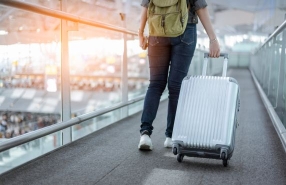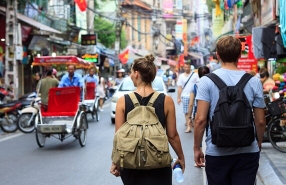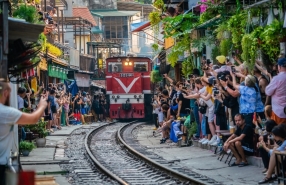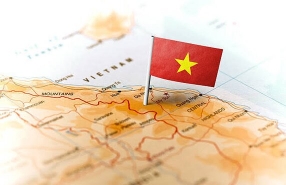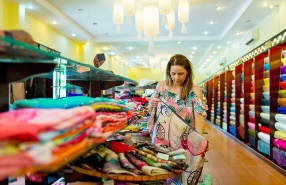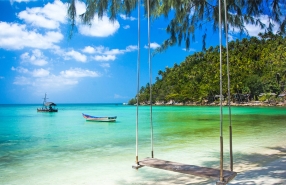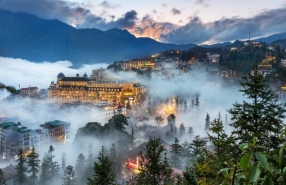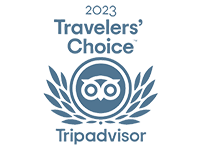What Not To Do In Thailand ? Dos And Don'ts In Thailand

Thailand, often called the Land of Smiles, is a country rich in Asian culture and traditions, with a history stretching back nearly 4,000 years. As an Asian nation, its cultural values differ greatly from those of the Western world. When traveling or visiting a country on the other side of the globe, it’s easy to make cultural mistakes without realizing it. By learning about Thai culture, including what to do and what not to do in Thailand, in this article, travelers can better appreciate the country beyond its beaches and temples, while connecting more deeply with its people and way of life.
Dos And Don'ts In Thailand
I. 12 things you should know about Thai culture before visiting
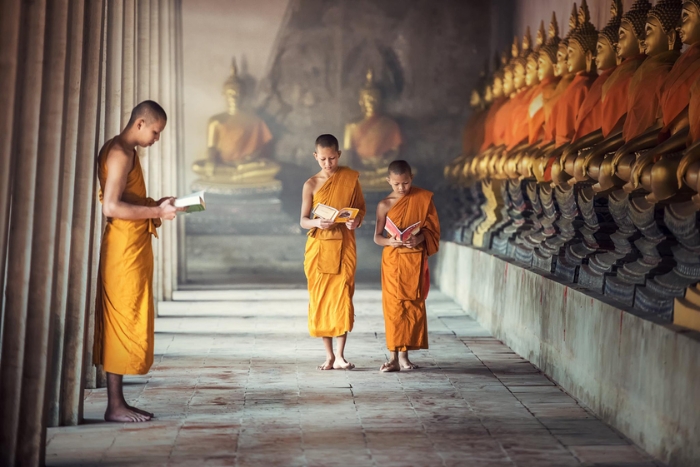
Before traveling to any country, it’s essential to understand its culture to show respect and avoid misunderstandings. In Thailand, learning about the dos and don'ts in Thailand and the 12 core values of Thais helps visitors appreciate the country’s deep traditions. Introduced by the Thai government in 2014, these values reflect Thailand’s soul — loyalty, morality, and unity — inspired by Buddhist teachings and royal philosophy.
Thailand’s traditions are deeply rooted in its history, from the Sukhothai and Ayutthaya Kingdoms, where Buddhism and monarchy shaped the nation’s identity. These values still guide Thai people today — from how they greet others to how they live their daily lives.
| No | Core Value | Description & Examples |
|---|---|---|
1 | Loyalty to the nation, religion, and monarchy | Thais stand for the national anthem twice a day in public places. |
2 | Honesty, sacrifice, and patience for the common good | The “Mai Pen Rai” mindset encourages calmness and tolerance. |
3 | Gratitude to parents, guardians, and teachers | Thais address elders respectfully, often using “Khun” before names. |
4 | Pursuing knowledge through education and experience | Many Thais value lifelong learning, both formal and spiritual. |
5 | Preserving Thai culture and traditions | Traditional festivals like Songkran and Loy Krathong celebrate heritage. |
6 | Living with morality, integrity, and generosity | Merit-making and almsgiving reflect Buddhist compassion. |
7 | Understanding democracy with the King as Head of State | Respect for the monarchy is seen as part of civic duty. |
8 | Respecting law, discipline, and elders | Showing deference and politeness is central in social life. |
9 | Practicing mindfulness according to royal philosophy | Mindful speech and calm behavior are highly valued. |
10 | Following the Sufficiency Economy concept of the late King | Many rural families live sustainably and modestly. |
11 | Building physical and mental strength | Meditation and sports like Muay Thai promote discipline. |
12 | Prioritizing community and national interests | Cooperation and unity are seen as key to national harmony. |
Understanding these cultural foundations helps visitors know how to act respectfully and what not to do in Thailand during their trip.
II. What not to do in Thailand ? 15 Don’ts in Thailand
Before visiting Thailand, it’s important to understand what not to do in Thailand to avoid disrespect or legal trouble. This list of things not to do in Thailand will help you travel confidently and respectfully while embracing local culture.
1. Don’t wear revealing clothes: Dress modestly, especially in temples or rural areas. Avoid short shorts, tank tops, or see-through outfits. Always cover your shoulders, knees, and chest when visiting sacred or cultural sites — modesty is one of the most important don’ts in Thailand.
2. Don’t break local laws: Thailand has strict regulations. Avoid public intoxication, drug use, gambling, vaping, or smoking in non-designated areas. Never litter, and always drink bottled water instead of tap water.
3. Don’t be disrespectful
Never touch anyone’s head, and don’t point your feet at people or Buddha statues. Avoid shouting, showing anger, or public arguments. Women should never touch monks — one of the most serious things not to do in Thailand.
4. Don’t say offensive things
Avoid talking about the royal family, politics, or religion. Criticizing the monarchy is illegal under lèse-majesté laws. Don’t ask personal questions about age, salary, or marital status. Stay calm and polite in all interactions.
5. Don’t bring restricted items: Avoid bringing illegal drugs, counterfeit goods, firearms, or e-cigarettes. Exporting Buddha images or antiques without a permit is against Thai law.
6. Don’t support unethical activities: Say no to elephant rides, tiger selfies, or any attraction exploiting animals. Avoid scams, unlicensed taxis, and unsafe jet ski rentals. Don’t participate in protests or drive without a helmet — safety is key when learning what not to do in Thailand.
7. Don’t wear shoes inside temples: Remove your shoes before entering temples or private homes. This is a simple but essential sign of respect in Thai culture.
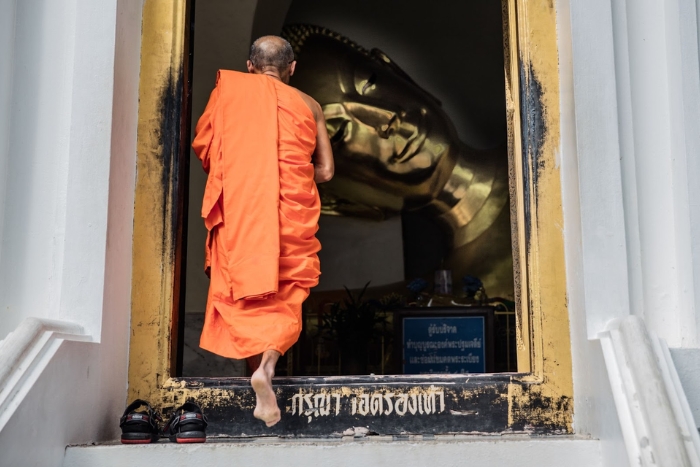
8. Don’t touch monks if you are a woman: Women should never make physical contact with monks. If you need to offer something, place it on a cloth or table instead.
9. Don’t sit higher than monks or Buddha images: Avoid sitting above or turning your back to Buddha statues. Sit lower or bow slightly as a gesture of respect.
10. Don’t rely only on English: While English is common in tourist areas, learning basic Thai greetings or how to say hello in Thai like sawasdee (hello) and khob khun (thank you) makes interactions more meaningful.
11. Don’t overstay your visa: Even one extra day can lead to fines or future entry bans. Always check your visa expiry date.
12. Don’t hand over your passport to rental shops: Some motorbike rentals may keep your passport — don’t allow it. Use a copy instead to avoid scams.
13. Don’t underestimate Thai spice : Thai dishes can be extremely spicy! If unsure, say “mai phet” (not spicy) or “nid noi” (a little spicy).
14. Don’t take disrespectful photos of Buddha statues: Ask before taking pictures in temples and never climb on or pose disrespectfully near Buddha statues.
15. Don’t lose your patience: Thailand is called the Land of Smiles for a reason. Stay calm and friendly — keeping your cool is one of the golden don’ts in Thailand.
III. What should you do in Thailand ? 13 Dos in Thailand
To truly experience the Land of Smiles, travelers should learn what to do and not to do in Thailand. These dos in Thailand will help you respect local customs, connect with the culture, and make your trip both meaningful and enjoyable.
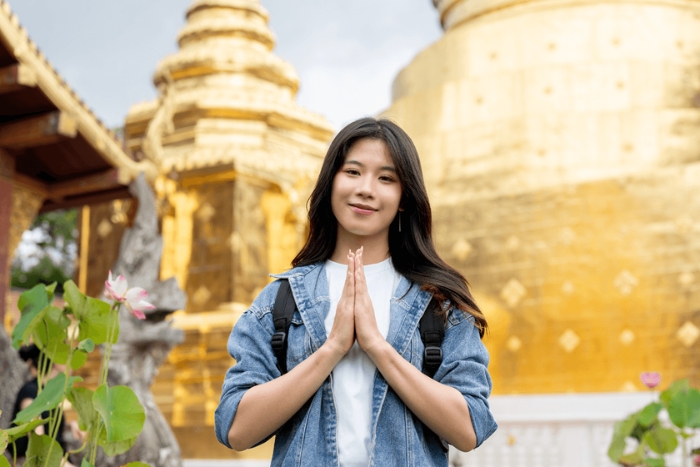
1. Respect traditions: Greet with the “wai” (palms together, saying sawasdee ka/krub), remove shoes before entering temples or homes, and stand respectfully when the national anthem plays at 8 AM and 6 PM. These small gestures show deep respect for Thai hierarchy and traditions.
2. Try authentic Thai cuisine: Explore the country’s world-famous street food at markets like Chatuchak (Bangkok) or Chiang Mai Night Bazaar. Try pad thai, som tam (papaya salad), and mango sticky rice. Choose busy, clean stalls and ask for “mai pet” (not spicy) if you prefer mild flavors.
3. Enjoy a traditional Thai massage: Experience a relaxing Thai massage, one of the best things to do in Thailand. Sessions cost around 200–500 THB. Visit licensed spas in Bangkok or Phuket, wear loose clothes, and inform the therapist of any health issues.
4. Ride a Tuk-Tuk (Safely!): A tuk-tuk ride is iconic and fun, but always negotiate the price first (50–100 THB for short rides). Avoid “special deals” from drivers offering stops at gem shops or tailors. For longer trips, use the Grab app.
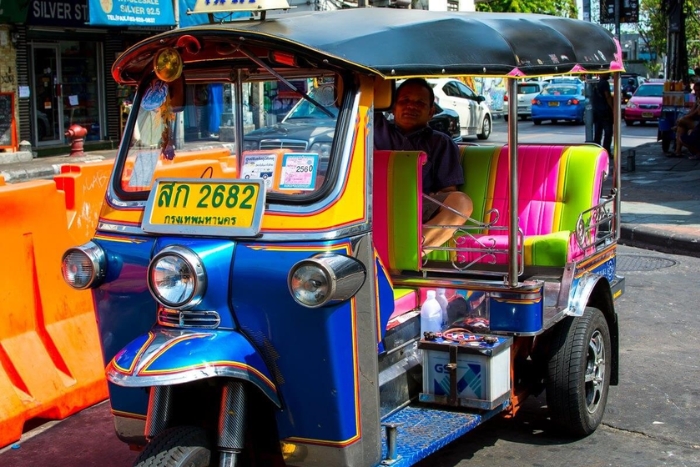
5. Experience Thai Street Food: Visit Yaowarat Road (Chinatown) or night markets for classic dishes like guay jab (rolled noodles) and khao man gai (chicken rice). One of the essential dos in Thailand is to join a street food tour, where you can safely try a variety of local flavors while soaking up the vibrant atmosphere and authentic energy of Thai culture.
6. Try the Durian Fruit: Taste Thailand’s famous “king of fruits” during April–August at markets like Or Tor Kor. The rich, creamy Monthong variety is a must-try—but its smell is banned in hotels! Pair with mangosteen for balance.
7. Visit the Maeklong Railway Market: A must-see experience! Watch trains pass through the “umbrella market” as vendors fold stalls in seconds. Located 1.5 hours from Bangkok, it’s best visited around 11 AM or 2 PM and can be combined with a floating market tour.
8. Explore Chinatown at Night: Stroll through Yaowarat Road after sunset for street seafood, crispy pancakes, and glowing neon chaos. Visit Wat Traimit (Golden Buddha Temple) and Sampeng Lane for local fabrics and trinkets.
9. Dress traditionally at wat arun: Rent a chut thai (traditional Thai outfit) near the Temple of Dawn for 200–500 THB. Golden-hour photos with the porcelain towers make unforgettable memories—just return outfits on time and respect dress codes.
10. Discover Ayutthaya’s ancient ruins: A day trip 80 km north of Bangkok reveals the grandeur of this UNESCO World Heritage Site. Visit Wat Mahathat (Buddha head in tree roots) and Wat Phra Si Sanphet, ideally in the cool season (Nov–Feb).
>>> What to do and see in Ayutthaya in November ?
>>> What to do in Ayutthaya in 24 hours ?
11. Be mindful in temples: One of the important dos in Thailand is to dress modestly, sit with your feet tucked under, and ask permission before photographing monks or rituals. Lighting incense or donating small amounts shows respect and earns good merit.
12. Support sustainability: Reduce plastic by using reusable bottles or bamboo straws. Wear reef-safe sunscreen when snorkeling in Koh Tao or Similan Islands, and support ethical sanctuaries like Elephant Nature Park.
13. Engage with lcal communities: Learn simple Thai phrases (khop khun – thank you, mai pen rai – no problem) to build rapport. Bargain politely at markets, support local artisans, and join Thai festivals like Songkran (April) or Loy Krathong (November) to immerse in Thai culture.
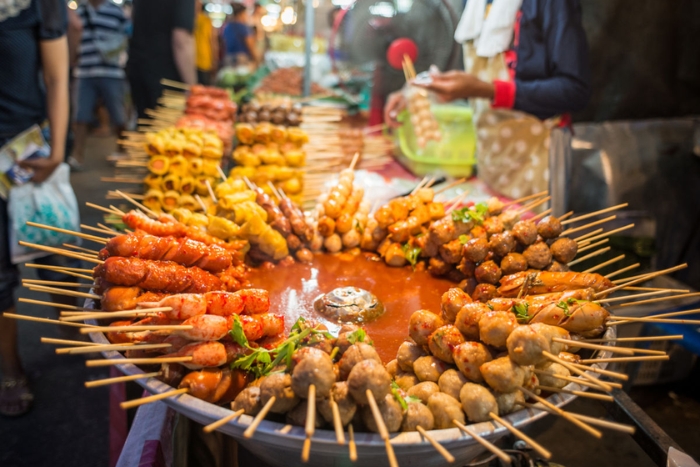
Understanding dos and don’ts in Thailand is essential to traveling respectfully and experiencing the country authentically. Be kind, smile often, and stay patient — the Thai way of life values calmness and courtesy. Always respect Buddhism, dress modestly in temples, and follow local customs like greeting with a “wai.” Remember, knowing what not to do in Thailand is just as important as knowing what you should do. By embracing the relaxed “Mai Pen Rai” mindset, travelers can connect more deeply with Thai people and culture. For seamless, respectful travel across Southeast Asia, plan your journey with Autour Asia – travel agency in Asia.
>>> Thailand weather - Best time to visit Thailand
>>> 21-day trip to Thailand and Laos
>>> Thailand Travel Guide
>>> Thailand itinerary 3 weeks
>>> Thailand Tours
Riding a tuk-tuk in Thailand can be a fun and authentic experience, especially during your family trip to Thailand 10 days. It’s generally safe, but be smart about it. Always negotiate the fare upfront—around 50–100 THB for short rides—to avoid misunderstandings. A tuk-tuk ride offers a lively glimpse of local life, but watch out for drivers offering “special deals” that lead to overpriced shops or fake gem stores. For longer distances, it’s best to use Grab or a metered taxi instead. Following these simple dos and don’ts for getting around ensures a safe, enjoyable, and scam-free adventure in Thailand.
When visiting temples in Thailand, it’s important to know what not to do in Thailand to show respect for the country’s spiritual traditions. Avoid revealing clothes such as sleeveless tops, crop tops, short skirts, or shorts. Instead, choose loose-fitting outfits that cover your shoulders and knees. Before entering any temple or sacred space, remove your hat and shoes as a sign of respect. Remember, one of the key rules about what not to wear in Thailand is dressing inappropriately at religious sites. Following these simple guidelines ensures you behave respectfully and enjoy a culturally mindful experience.
Related travel guide
Other similar articles
CUSTOMIZABLE BY LOCAL EXPERTS
Personalized trip at the original price!
REFUND GUARANTEE
We believe in our work and promise to give you money back.
GOOD PRICE / QUALITY
95% satisfied more than expected!
24/7 LOCAL SUPPORT
We are always available online to provide assistance at any time.
Most read articles
Autour Asia is highly recommended on
Embracing the mission of "Satisfied more than expected" and providing authentic experiences, we have received numerous recommendations on reputable travel forums:












